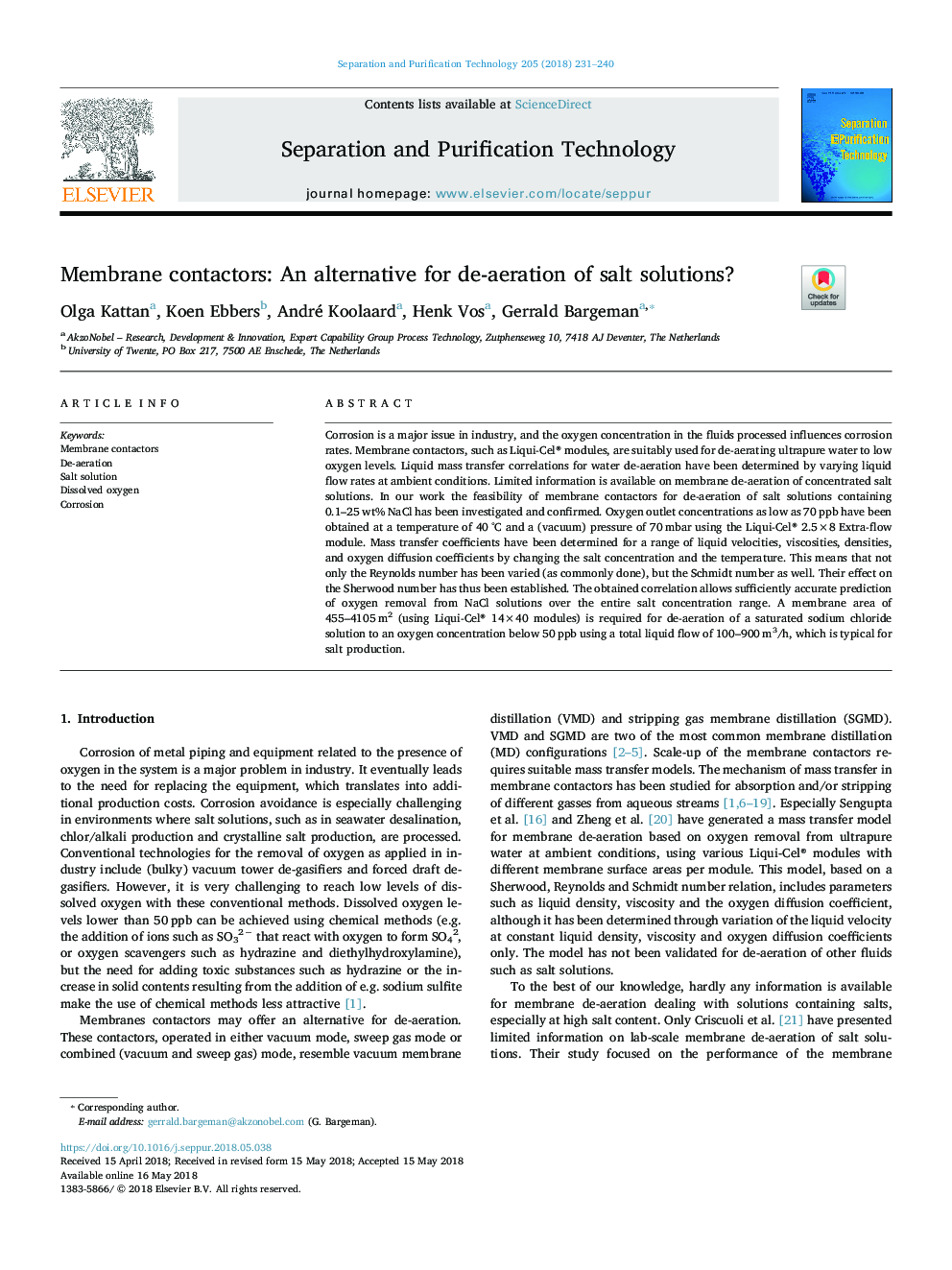| Article ID | Journal | Published Year | Pages | File Type |
|---|---|---|---|---|
| 7043629 | Separation and Purification Technology | 2018 | 10 Pages |
Abstract
Corrosion is a major issue in industry, and the oxygen concentration in the fluids processed influences corrosion rates. Membrane contactors, such as Liqui-Cel® modules, are suitably used for de-aerating ultrapure water to low oxygen levels. Liquid mass transfer correlations for water de-aeration have been determined by varying liquid flow rates at ambient conditions. Limited information is available on membrane de-aeration of concentrated salt solutions. In our work the feasibility of membrane contactors for de-aeration of salt solutions containing 0.1-25â¯wt% NaCl has been investigated and confirmed. Oxygen outlet concentrations as low as 70â¯ppb have been obtained at a temperature of 40â¯Â°C and a (vacuum) pressure of 70â¯mbar using the Liqui-Cel® 2.5Ã8 Extra-flow module. Mass transfer coefficients have been determined for a range of liquid velocities, viscosities, densities, and oxygen diffusion coefficients by changing the salt concentration and the temperature. This means that not only the Reynolds number has been varied (as commonly done), but the Schmidt number as well. Their effect on the Sherwood number has thus been established. The obtained correlation allows sufficiently accurate prediction of oxygen removal from NaCl solutions over the entire salt concentration range. A membrane area of 455-4105â¯m2 (using Liqui-Cel® 14Ã40 modules) is required for de-aeration of a saturated sodium chloride solution to an oxygen concentration below 50â¯ppb using a total liquid flow of 100-900â¯m3/h, which is typical for salt production.
Related Topics
Physical Sciences and Engineering
Chemical Engineering
Filtration and Separation
Authors
Olga Kattan, Koen Ebbers, André Koolaard, Henk Vos, Gerrald Bargeman,
